Picto Diary - 12 November 2015 - Good guys
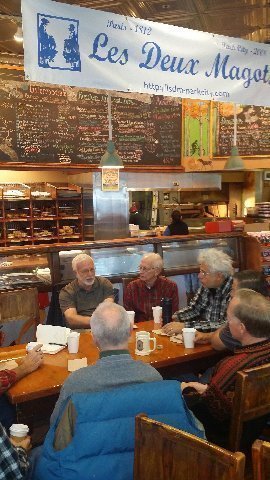
Above: Gary Drage speaks to La Societe Deux Magots (LSDM) Wasatch Bagel, Park City, UT. 12 November 2015. Seated to Drage's left is Manhattan, the last surviving engineer who worked on the Manhattan Project at Los Alamos, New Mexico.
Gary, a USC trained engineer, spent a thirty year career as a civilian naval weapons development engineer. He ended his career as Division Head of undersea naval weapons development, working from southern California, under the aegis of "China Lake."
Among others, Gary spoke about his role in the development of the cable-controlled Undersea Recovery Vehicle (CURV)... the first successful remotely operated undersea vehicle. CURV became best known in 1966 when it recovered a live atomic bomb from 3000 feet of water off the coast of Spain. A B52 and its refueling plane had collided causing the lost bomb incident.
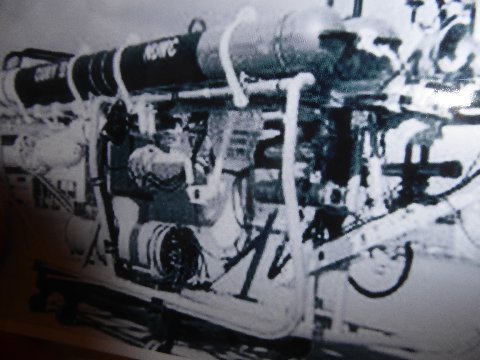
Above: Cable-controlled undersea recovery vehicle.
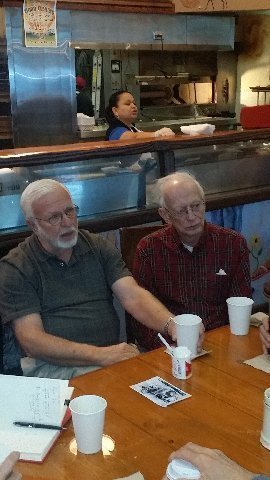
Above: Gary Drage (left) and Manhattan. 12 November 2015. Wasatch Bagel.
Gary Drage bio. Upon graduation in engineering I went to work for a navy laboratory that has had a number of names, including Naval Undersea Warfare Center (NUWC). The roll of the department I worked in at the time was the development of Underwater Weapons. Systems under development included torpedoes, undersea missiles, submarine launched missiles (Polaris), and unmanned vehicles. These various systems were tested off the coast of Southern California on ranges near San Clemente Island. Most weapon systems were fitted with buoyance systems for recovery after testing. However, frequently the buoyancy systems did not work for various reasons. So , out of necessity, the lab developed the CURV I (Cable-controlled Undersea Recovery Vehicle) to retrieve those weapons wherein the buoyancy systems did not work or were not used. CURV I was the first successful remotely operated undersea vehicle. When a B-52 and it's refueling plane collided over Spain in 1966 four nuclear bombs fell to the earth, 3 onto land and one in approximately 3000' of water. This was a high profile event with negative worldwide publicity. At the time the CURV was a little know piece of equipment, but it became known throughout the world when it was successful in recovering the bomb, even though it self destructed in the process due to water depth beyond the CURV design limits. Discussion would include the history of the CURV, the design of the CURV, and its evolution after this event. At the time I was a junior engineer in the weapons development department, and participated in the redesign and upgrade of the follow on vehicle (CURV II).
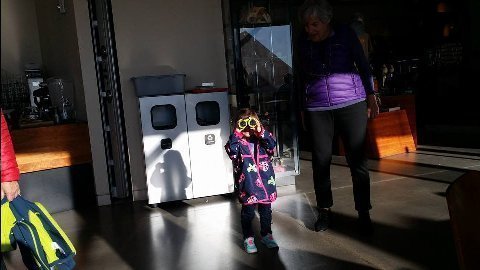
Above: Roy gazes at Grandpa thru binoculars. Utah Natural History Museum. Salt Lake City, UT. 12 November 2015.
"Are you one of the good guys?" she asked Aunt Joyce.
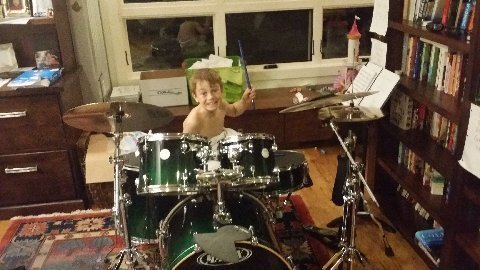
Above: Drums. Practicing straight out of the shower. What dedication! 12 November 2015.
Addendum:
Thanks for sharing Margaret's photo in front of the Shooting Star Saloon! She looks great and we'd like to put the photo on our Shooting Star website...permission granted? Great office view as well. Always excited to hear about good snowfall.
All the best from Miami,
Magnolia,
Miami, FL
.....el Contador has very fond memories of our visit to the Shooting Star Saloon in Huntsville and hopes that you had a pint of their finest whilst there.
Eton Mum,
Devon, UK
Great to see your outdoor pictures and snow
Thanks
LaPsy,
Los Angeles, CA
Great. Snow!
Comic Mom,
New York City, NY
Super pictures! Thanks,
Manhattan,
Park City, UT